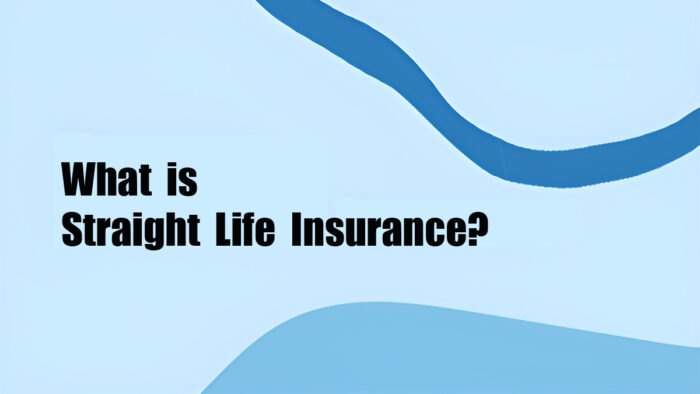Straight life insurance, commonly referred to as whole life insurance, is a type of permanent life insurance that lasts for your entire life and comes with a level-premium payment. It is different from term life insurance, which is meant to just cover you for a certain period of time (typically 10–30 years).

A straight life insurance policy has a guaranteed death benefit and fixed premium payments. Unlike term life insurance, this policy has a cash value component that builds at a fixed rate. And because of the guaranteed cash value accumulation, straight life insurance tends to be more expensive than term life insurance.
How Does Straight Life Insurance Policy Work?
Straight life insurance is like a lifelong savings plan that is covered with protection. You pay fixed amounts regularly (may be monthly), and if something happens to you, your loved ones will get a payout.
As long as you keep paying premiums, the plan stays active, and a part of your payment will go into a savings account that grows over time. When the account’s big enough, you can take out money or borrow against it. If you ever decide to stop, you get back what you’ve saved, minus any fees. If you did not touch the cash value, your beneficiaries will get the amount that is listed on your policy.
Straight Life Insurance Pros and Cons
This policy can be used as a great financial planning tool. It is meant for long-term goals. And if you want to have insurance for a short period of time, a term life policy is a better choice. To know if this whole life policy is the perfect one for you, consider its potential advantages and disadvantages.
Pros
- Fixed Premiums
- Level death benefit
- Guaranteed cash value growth
- Policyholders can surrender policy or loan for cash value.
Cons
- It is usually more expensive than term life insurance.
- The cash value growth is slow.
- It is not a good choice for short-term goals.
- If the cash value taken as a loan is not paid back, it may reduce the death benefit paid to the beneficiaries.
Straight Life Policy vs. Universal Life Policy
These two life policies are both for the long haul, but universal gives you more wiggle room. You can adjust your coverage and premiums when it comes to Universal Life.
But in straight life, what you see is what you get. If you want more coverage, you can have it, but it might be very expensive. If you need to pay less, you can, but be very careful not to let your policy slip away.
How Is Straight Life Insurance Taxed?
Death benefits from the insurance are paid tax-free to the beneficiaries listed on the policy. While you are alive, if you withdraw money from your cash value, taxes are levied on the amount that exceeds the policy basis. The basis of the policy is the amount you paid in premiums over time.
Also, if you surrender the policy, you will have to pay income taxes on the portion of the cash value that exceeds the policy basis. Generally, taxes don’t need to be paid on life insurance loans. However, keep in mind that if you do not repay the loan, you may face taxes. You will be taxed on any amount that exceeds the policy basis.
How Much Does Straight Life Insurance Cost?
Just like I have mentioned above, this policy is more expensive than term coverage. And the reason is that the company will be paying a death benefit as long as you pay your premiums.
The component of the cash value of the policy typically increases the premium compared to the term. The personal rating factors will determine the cost of your straight-life policy. These factors include age, health history, level of coverage, occupation, and hobbies.
Young policyholders usually get lower premiums compared to older ones or people who have chronic medical problems. Although these policies may be available without a medical examination, premiums will be higher and death benefits will be lower.
Is Straight Life Insurance Policy a Good Option?
This type of policy may be a good choice for a long-term financial planning tool. If you want coverage with a predictable premium and a guaranteed investment that can help supplement your retirement income, then a straight life policy may be the one for you.
This policy may not be the best choice for some people. Here are some alternatives they can consider: Universal life insurance, 20-pay, 10-pay, and 10-pay life insurance. Discuss this with your insurance agent or company to learn more about this insurance policy.


